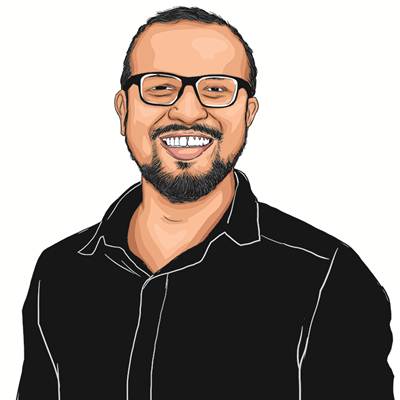Opinion People in Assam need development, not guns
Decision of state government to give gun licenses to indigenous communities is dangerous and risks further polarisation
 Unlike in other states, in Assam, it has long been an exclusionary term. Be it the movement in the 1980s or during the debates over the National Register of Citizens (NRC) — when another term, “Original Inhabitants (OI)” was introduced — the political contest over insider-outsider has been part of Assam’s body politic
Unlike in other states, in Assam, it has long been an exclusionary term. Be it the movement in the 1980s or during the debates over the National Register of Citizens (NRC) — when another term, “Original Inhabitants (OI)” was introduced — the political contest over insider-outsider has been part of Assam’s body politic Assam Government has launched a scheme to issue arms licenses to its majority population (wherever they are in minority), which it terms “indigenous”. This new step seems to be a part of a series of anti-Muslim policies taken up by the Himanta Biswa Sarma government.
In the recent past, the Assam government has pushed the subaltern Miya Muslims to the brink through consecutive actions. From demolition drives in several districts, including Dhubri, Goalpara, Barpeta, Darrang, Nagaon, Golaghat, and Kamrup, to the death of a few protesters — mostly Miya Muslims — has made Assam politics fraught with communalisation. Reportedly, the names of evicted persons in places such as Charubakhra, Chirakuta, Sandeshpur of Dhubri district, and Kachutoli of Kamrup district have also been deleted from the electoral rolls.
Hundreds of Miya Muslims who migrated to several districts of eastern Assam for work — mostly as labourers — have also been allegedly threatened and told to leave, in effect, restricting their mobility within the state. Additionally, the CM’s use of hurtful comments against the Miya Muslims has also made life difficult for this marginalised community. Against this backdrop, the decision to give arms licenses to the indigenous people for their own “safety” where they are “less” in numbers sows the seeds of further confrontation and paves the way for what can be called “competitive marginality”.
In Assam, “Khilonjiya” or the indigenous communities have been pitted against Miya subalterns by the majoritarian forces, mainly through the use of language. Use of offensive and exclusionary terms like “outsiders” (in Assamese, “bahiragoto”), “push back”, “illegal immigrants”, “Bangladeshi”, “doubtful voters” in common political parlance, coupled with contemptuous words used against Bengali-speaking Muslims, nowadays, shapes the political contour of the state.
Moreover, the definition of “indigenous” remains fraught with many challenges. Unlike in other states, in Assam, it has long been an exclusionary term. Be it the movement in the 1980s or during the debates over the National Register of Citizens (NRC) — when another term, “Original Inhabitants (OI)” was introduced — the political contest over insider-outsider has been part of Assam’s body politic. But in this debate, what is undermined is the incredible heterogeneity of Assam’s society. Among the social groups that have lived in the state for centuries are Ahom, Moran, Muttuck, Sonowal, Lalung, Brahmin and other upper caste Hindus, Karbi, Tiwa, Goria Muslim, Deshi Muslim, Bodos, Bengali, Adivasis (referred to as tea tribes) and Miya Muslims, among others. These social groups migrated to Assam in different historical periods. The situation has been further complicated since the government has started offering citizenship to undocumented Bangladeshis through the Citizenship Amendment Act (CAA).
However, now the discursive term “indigenous” is used for almost all, except the Miya Muslims, despite them constituting the largest Muslim group in Assam. Such exclusionary vocabulary is against the rights of the citizens enshrined in the Indian Constitution.
So, the move to allow these undefined “indigenous” communities to arm themselves has the potential to further provoke social unrest. Civil society groups, both from the Hindu and Muslim communities, have come out against this divisive move. It is high time for the judiciary to intervene and halt this effort before it is too late. The arming of civil society is not the way to protect the “indigenous” population, even when there is a credible threat — it is the responsibility of the government and its police to protect people. Such efforts amount to nothing but a dog whistle. The people of Assam need an egalitarian society, good educational institutions, a proper healthcare system, and employment, not guns.
The writer teaches Sociology at Jamia Millia Islamia, New Delhi





